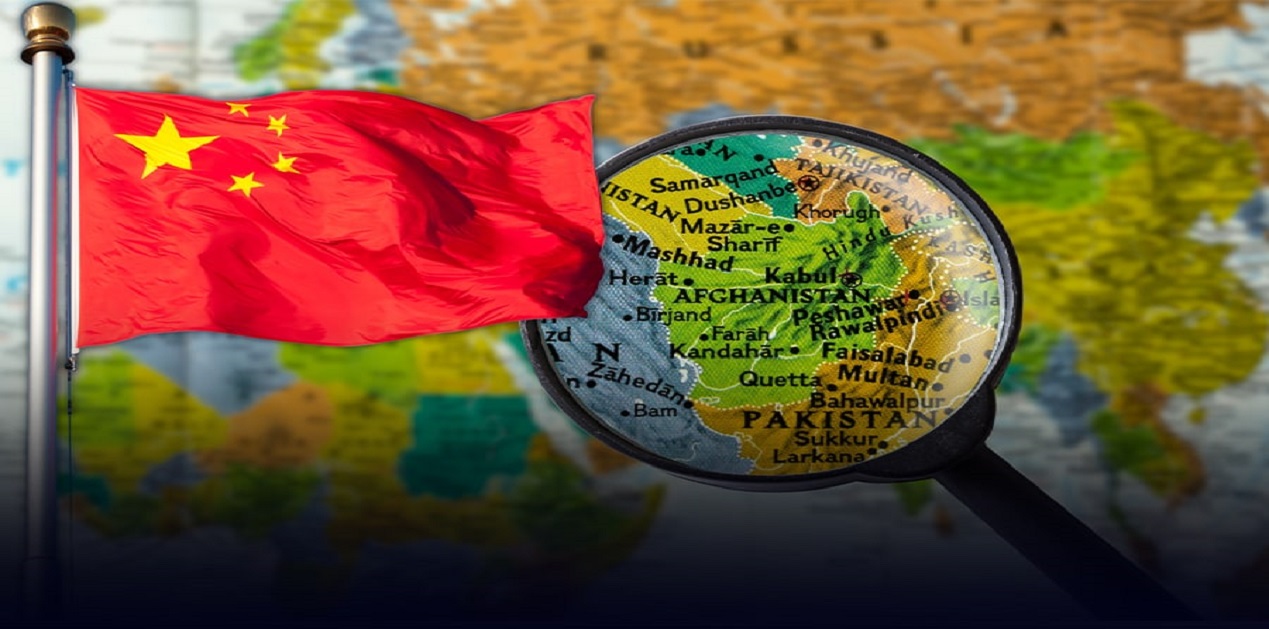Background
Due to its proximity to China’s western region and abundant natural resources, the Central Asian region is crucial from a geopolitical perspective. With the demise of the Soviet Union, China established a significant political and economic influence in Central Asia. Beijing has developed significant political ties with Central Asian countries through diplomatic and military cooperation. It is also a part of the Shanghai Cooperation Organization (SCO), a regional security group comprised of four out of five Central Asian republics: Kazakhstan, Kyrgyzstan, Uzbekistan, and Tajikistan. China has made significant economic investments in the region, sponsoring infrastructure projects and investing in the oil and gas industry. The Belt and Road Initiative, a huge infrastructure investment initiative aiming at increasing economic growth and linking Asia, Europe, and beyond, reinforced the China-Central Asia partnership. Many of these factors have contributed to Beijing’s growing influence in Central Asia.
China has become an increasingly important trading partner for Central Asian countries in recent years, importing substantial amounts of oil, gas, and minerals. In 2018, China’s trade with the five countries surpassed USD 40 billion. During the inaugural meeting of China-Central Asia leaders, Chinese President Xi Jinping offered to import more high-quality commodities and agricultural products from the region, with the goal of increasing bilateral trade to USD 70 billion by 2030.[1]
Moreover, China has pushed more Chinese residents to migrate to the region, resulting in expanding Chinese populations in several Central Asian towns. The migrated Chinese population is also getting married to Central Asian people, which is also a matter of concern. There have been protests in Kyrgyzstan about the cultural invasion of China. Anti-Chinese protests began in Bishkek, Kyrgyzstan, in January 2019. Protesters assembled in the center square demanded restrictions on work licenses for Chinese people, decreased Kyrgyz debt to China, and other steps to diminish Chinese presence, such as a prohibition on Kyrgyz-Chinese marriages.[2]
China’s Debt Trap
Broadly, China’s presence in Central Asia is viewed as a source of geopolitical influence as well as a potential for economic expansion. Concerns have been raised surrounding the amount of debt that some Central Asian countries have incurred from China as a result of China’s significant investment in Central Asia through different infrastructure projects and loans. China’s Belt and Road Initiative, which intends to create a network of commercial and infrastructural ties connecting China to the rest of Asia, Europe, and beyond, has been the driving force behind the country’s investments in the region. As a consequence of this endeavour, several infrastructure projects throughout Central Asia, such as roads, trains, and energy projects, have been financed and built.
Despite the fact that these investments have spurred the region’s much-needed growth, they have also raised questions about the amount of debt that some Central Asian nations have incurred from China. Several nations have struggled to pay back these loans, raising concerns about the viability of their economies in the long run and their capacity to service their debt. However, it should be noted that estimates on the precise amount of debt due by Central Asian nations to China vary considerably and are rarely made public. In order to lessen their reliance on China, some Central Asian nations have also attempted to renegotiate the conditions of their loans or look for alternate finance sources. There has also been a lack of transparency in the funding of BRI projects. As a result, it is expected that BRI would raise the Chinese debt of Central Asian nations.
Impact of the Ukraine Conflict
The Ukraine crisis will impact China’s influence in Central Asia, while the exact magnitude is unknown. Since the Ukrainian conflict, the international community has grown increasingly fearful of Russian action, allowing China to expand its influence in Central Asia. Following the crisis, China has moved to strengthen its political and economic ties with Central Asian nations through increasing investment and diplomatic engagement. Central Asian countries are very well aware of the concerns of Chinese deeper engagement; however, in the absence of other power to balance Beijing’s influence, they have to go along with China. As explained previously, China’s Belt and Road Initiative has significantly extended its regional influence. Yet, the BRI’s predicted outcome is not discernible. With the turmoil in Ukraine, China is attempting to diversify its export routes that pass through Russia. China is attempting to resurrect the China-Kyrgyzstan-Uzbekistan railway and collaborating closely with Iran to reroute its exports through Iranian ports. Furthermore, through organisations such as the Shanghai Cooperation Organization, China has strengthened its cooperation with Central Asian countries, enabling it to secure its position as a major player in the region.
Despite China’s rising influence in Central Asia, the region remains a complex and dynamic space, with various regional and global countries exerting influence. Russia, for example, has significant historical, cultural, and economic relations with a majority of Central Asian countries. Notwithstanding various perspectives on Russia’s declining influence in Central Asia, Moscow will undoubtedly continue to play a significant role in the region for the foreseeable future. And while the crisis in Ukraine has provided possibilities for China to expand its influence in Central Asia, the precise degree of this impact is unknown as the region remains a complex and dynamic arena in which numerous regional and global powers vie for influence.
Finally, the success or failure of any efforts to limit China’s influence in Central Asia will be determined by several factors, including the region’s political and economic climate, the interests and actions of other regional and global powers, and the Central Asian countries ability to negotiate favourable terms for themselves. The ability to tame the dragon in Central Asia is a complicated issue, to put it simply. It is determined by various circumstances, including the region’s political, economic, and security climate.
Can India be an Option in Central Asia to Balance China?
India regards the region as its extended neighbourhood, and New Delhi has long been interested in the region. Nonetheless, engagement has remained below what was expected. Following Prime Minister Modi’s visit to Central Asia in 2015, India-Central Asian ties began to improve. The five Central Asian countries highly regard India, and the region has always viewed India as a key partner. Given the shifting geopolitical landscape, New Delhi must use the opportunity to push its Central Asia policy. For improved results, more investments are needed, and connectivity projects must be hastened. India’s proactive involvement in Central Asia will benefit these countries in countering Chinese influence.
Endnotes
[1]Ananth Krishnan, ‘Xi offers Central Asian countries $500 million, announces $70 billion trade target’, The Hindu, January 26, 2022.https://www.thehindu.com/news/international/xi-offers-central-asian-countries-500-million-announces-70-billion-trade-target/article38329558.ece
[2] ‘Kyrgyz police disperse anti-Chinese rally’, the Reuters, January 17, 2019. https://www.reuters.com/article/us-kyrgyzstan-protests-china-idUSKCN1PB1LJ
(The paper is the author’s individual scholastic articulation. The author certifies that the article/paper is original in content, unpublished and it has not been submitted for publication/web upload elsewhere, and that the facts and figures quoted are duly referenced, as needed, and are believed to be correct). (The paper does not necessarily represent the organisational stance... More >>
Image Source: https://storage.kun.uz/source/9/O8OemCVGoosBYC0AYY9O8Tfaj-4quwJO.jpg











Post new comment